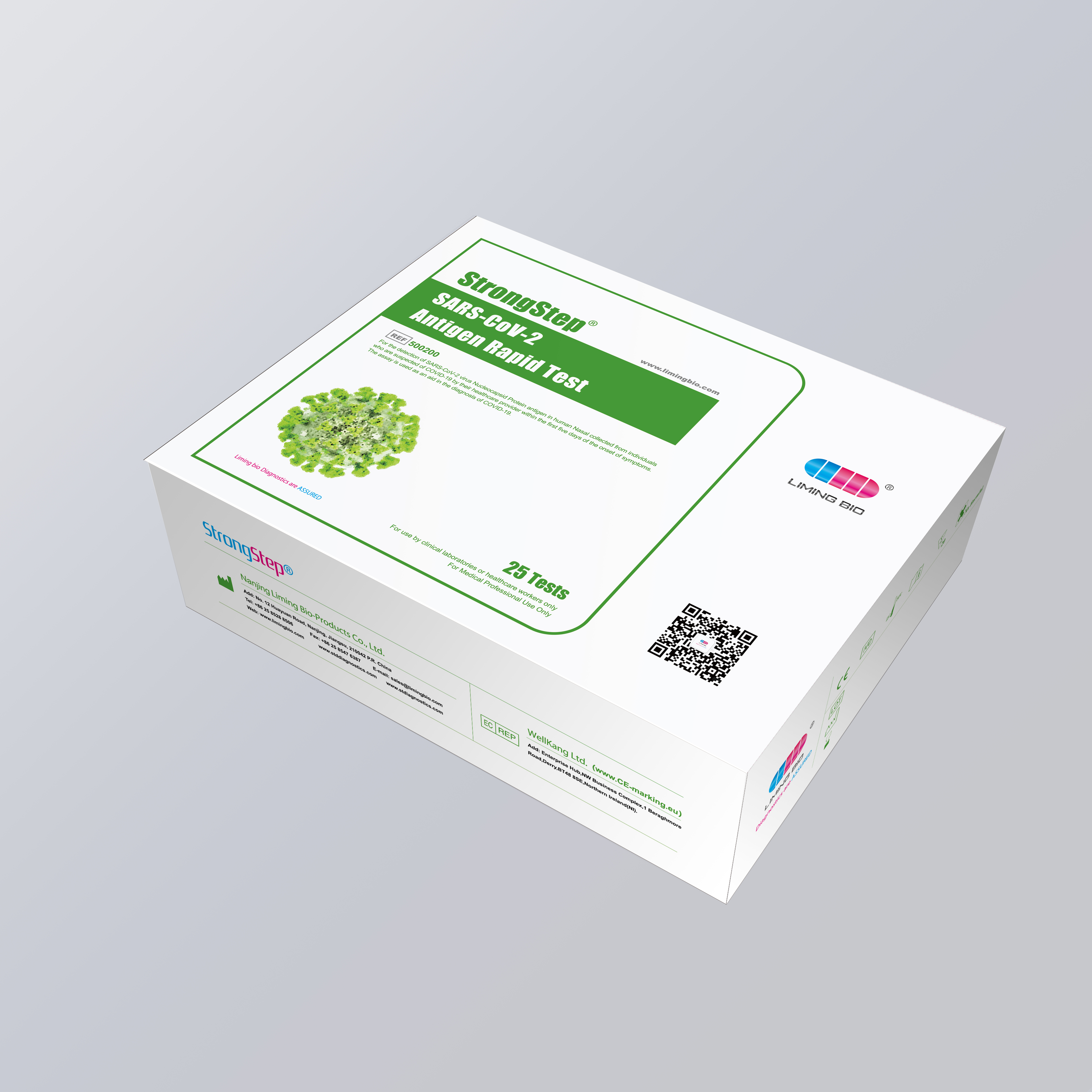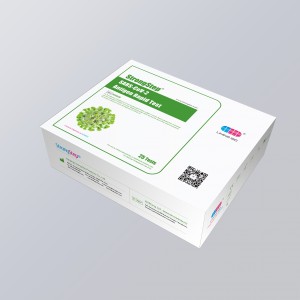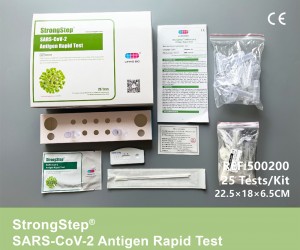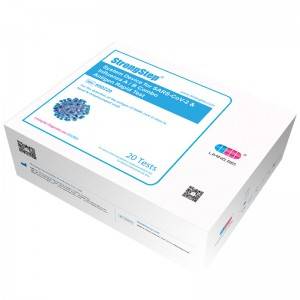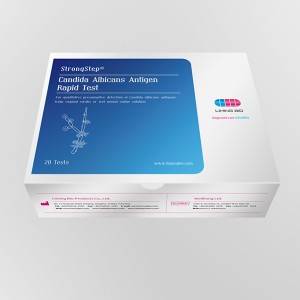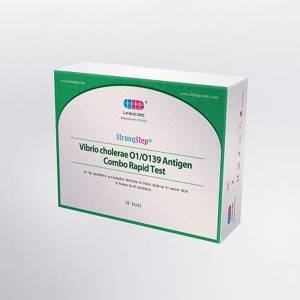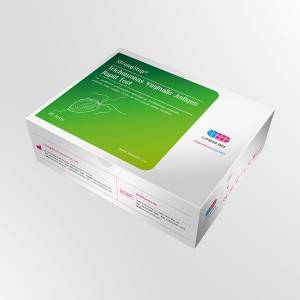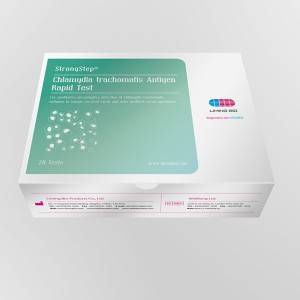PRECAUTIONS
• This kit is for IN VITRO diagnostic use only.
• This kit is for medical professional use only.
• Read the instructions carefully before performing the test.
• This product does not contain any human source materials.
• Do not use kit contents after the expiration date.
• Handle all specimens as potentially infectious.
• Follow standard Lab procedure and biosafety guidelines for handling and disposal of potentially infective material. When the assay procedure is complete, dispose specimens after autoclaving them at 121℃ for at least 20 minutes. Alternatively, they can be treated with 0.5% Sodium Hypochlorite four hours before disposal.
• Do not pipette reagent by mouth and no smoking or eating while performing assays.
• Wear gloves during the whole procedure.
• It is recommend to use Liming Bio’s System Device For Rapid Detection of SARS-CoV-2 Antigen (Cat # 500210) to protect the operator and environment.
STORAGE AND STABILITY
The sealed pouches in the test kit may be stored between 2-30℃ for the duration of the shelf life as indicated on the pouch.
SPECIMEN COLLECTION AND STORAGE
Nasal Swab Sample:
• Insert one swab into one nostril of the patient. The swab tip should be inserted up to 2.5 cm (1 inch) from the edge of the nostril. Roll the swab 5 times along the mucosa inside the nostril to ensure that both mucus and cells are collected.
• Use the same swab, repeat this process for the other nostril to ensure that an adequate sample is collected from both nasal cavities.
Use the swab supplied in the kit, alternative swabs may adversely affect test performance, uses should validate their swab before use it. It is recommended that specimens be processed as soon as possible after collection. Specimens can be held in container up to 1 hour at room temperature (15°C to 30°C), or up to 24 hours when refrigerated (2°C to 8°C) before processing.
PROCEDURE
Bring test devices, specimens, buffer and/or controls to room temperature (15-30°C) before use.
• For pre-filled buffer, remove the seal from the vial containing the liqutd.
• Put the specimen swab into the tube. Vigorously mix the solution by rotating the swab forcefully against the side of the tube for least 15 times (while submerged). Best results are obtained when the specimen is vigorously mixed in the solution.
• Allow the swab to soak in the Extraction Buffer for one minute prior to the next Step
• Squeeze out as much liquid as possible from the swab by pinching the side of the flexible extraction tube as the swab is removed. At least 1/2 of the sample buffer solution must remain in the tube for adequate capillary migration to occur. Put the cap onto the extracted tube.
• Discard the swab in a suitable biohazardous waste container.
• Cover the cap.
• Mix the solution by squeeze the specimen forcefully against the side of the tube for at least ten times
(while submerged). Best results are obtained when the specimen is mixed in the solution. Allow the specimen to soak in the Dilution Buffer for one minute prior to the next step.
• The specimens extracted can retain at room temperature for 30 minutes without affecting the result of the test.
• Remove the test device from its sealed pouch, and place it on a clean, level surface. Label the device with patient or control identification. To obtain a best result, the assay should be performed within 30 minutes.
• Add 3 drops (approximately 100 µL) of extracted sample from the Extraction Tube to the round sample well on the test device.
• Avoid trapping air bubbles in the sample well (S), and do not drop any solution in observation window. As the test begins to work, you will see color move across the membrane.
• Wait for the colored band(s) to appear. The result should be read by visual at 15 minutes. Do not interpret the result after 30 minutes.
Discard used Extraction Tubes and Test Devices in suitable biohazardous waste container.

